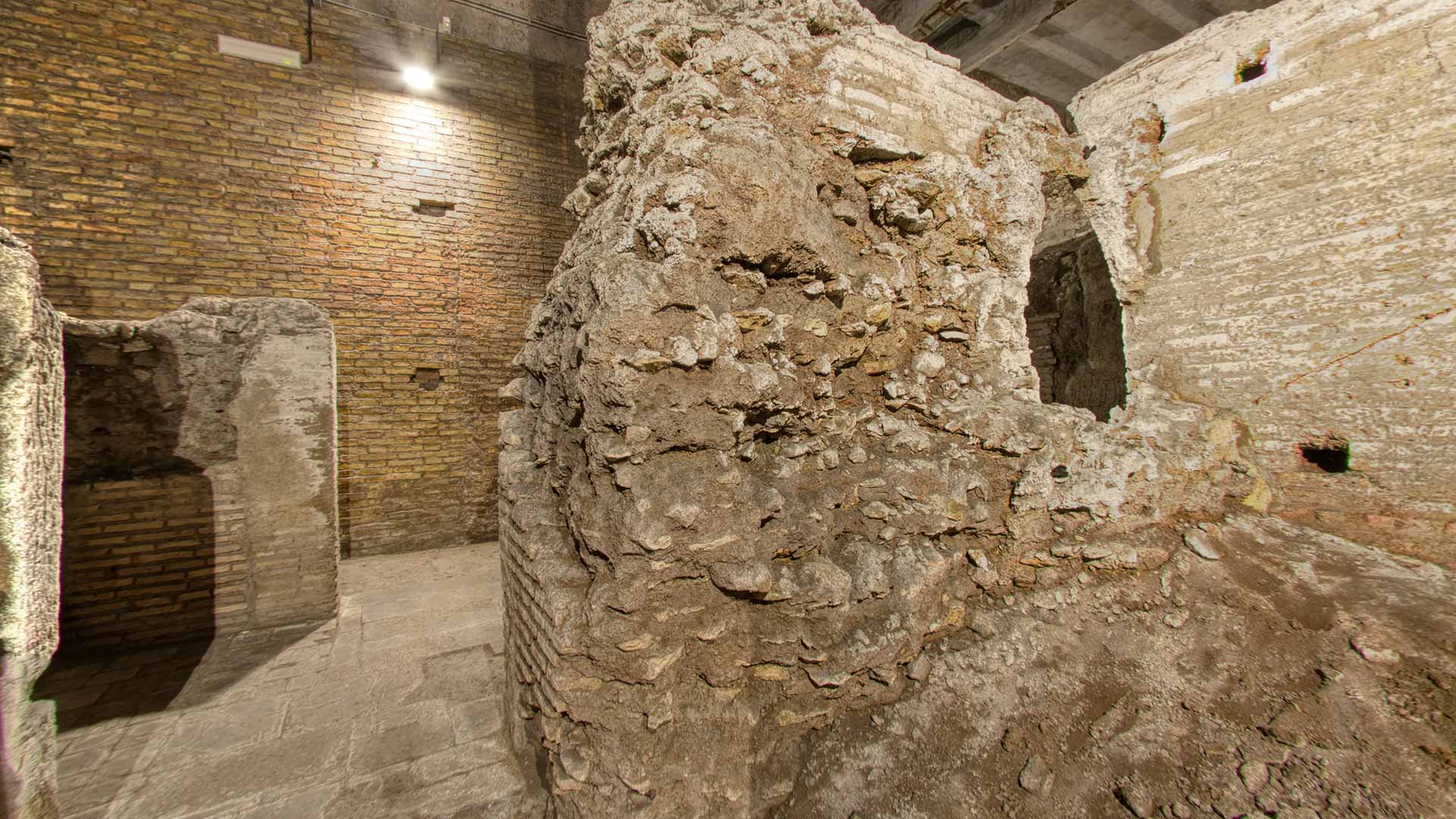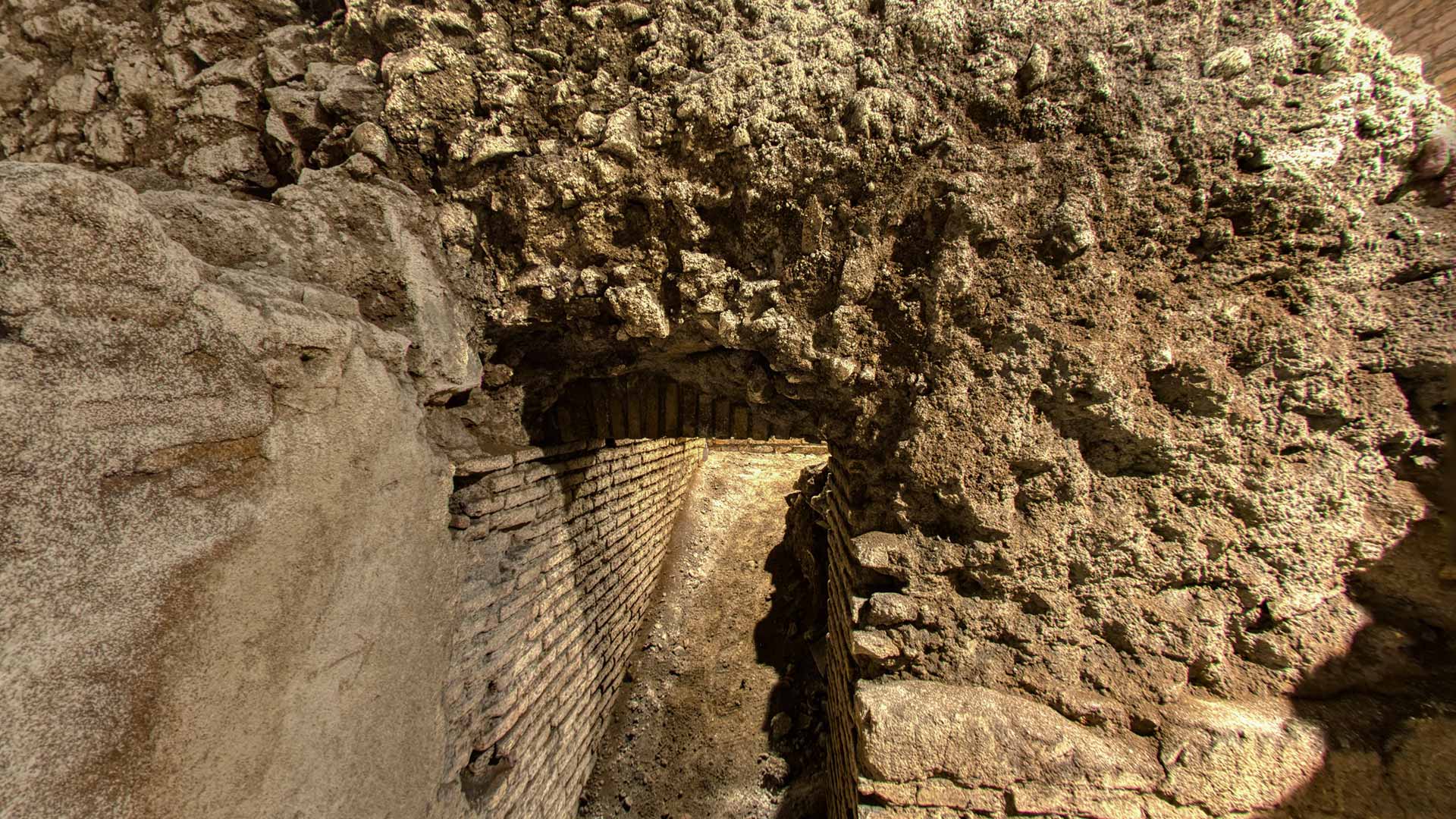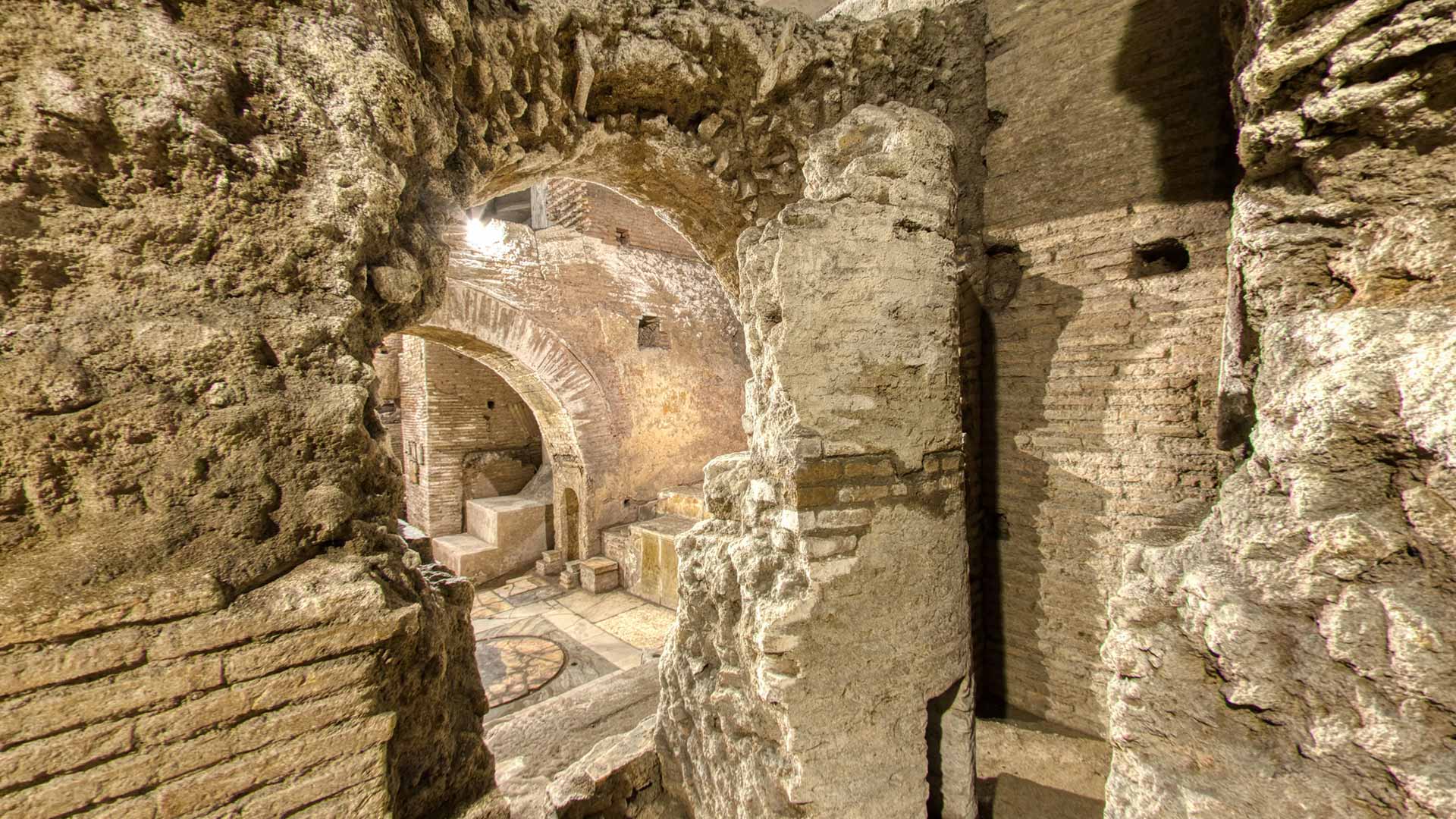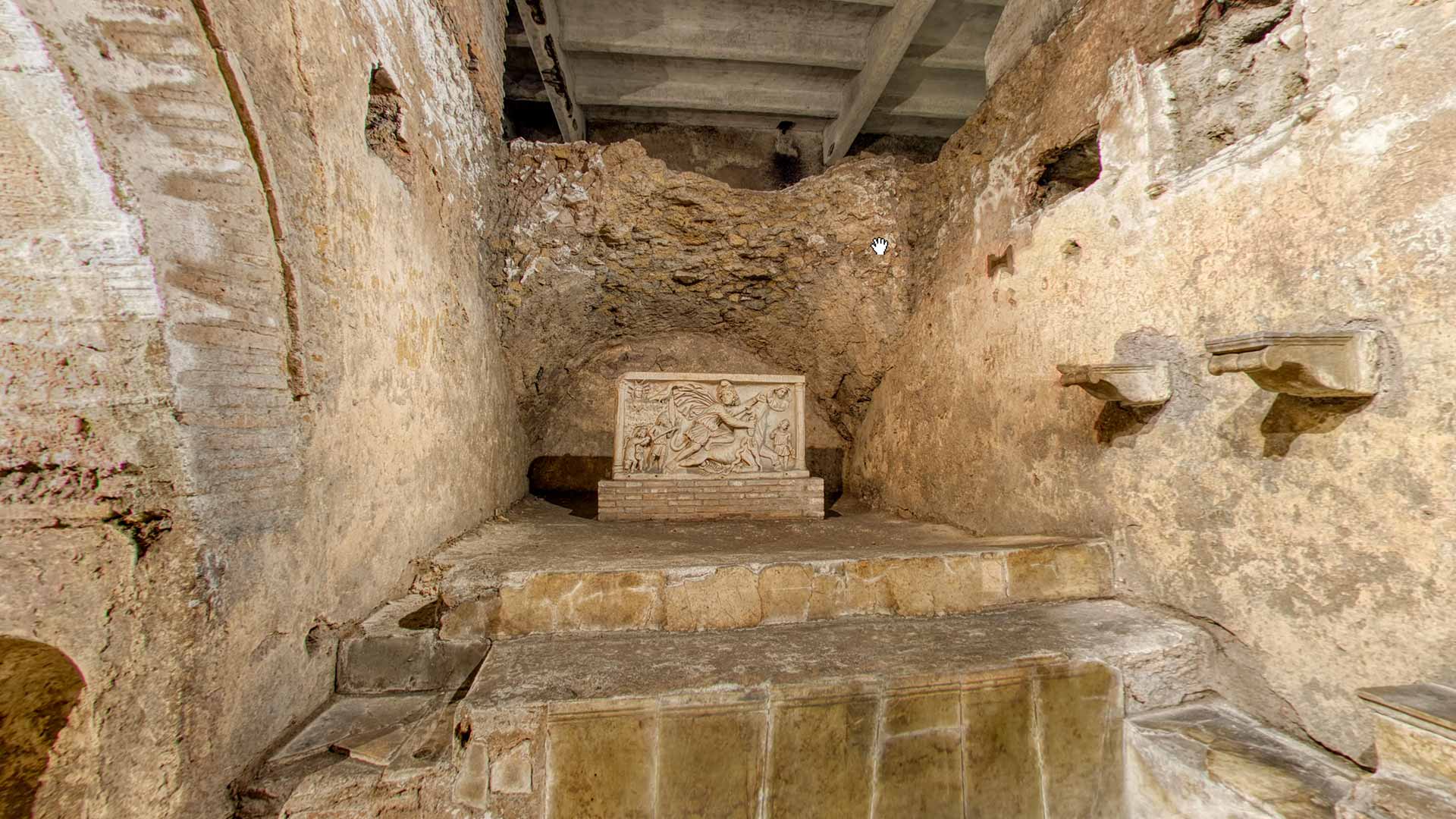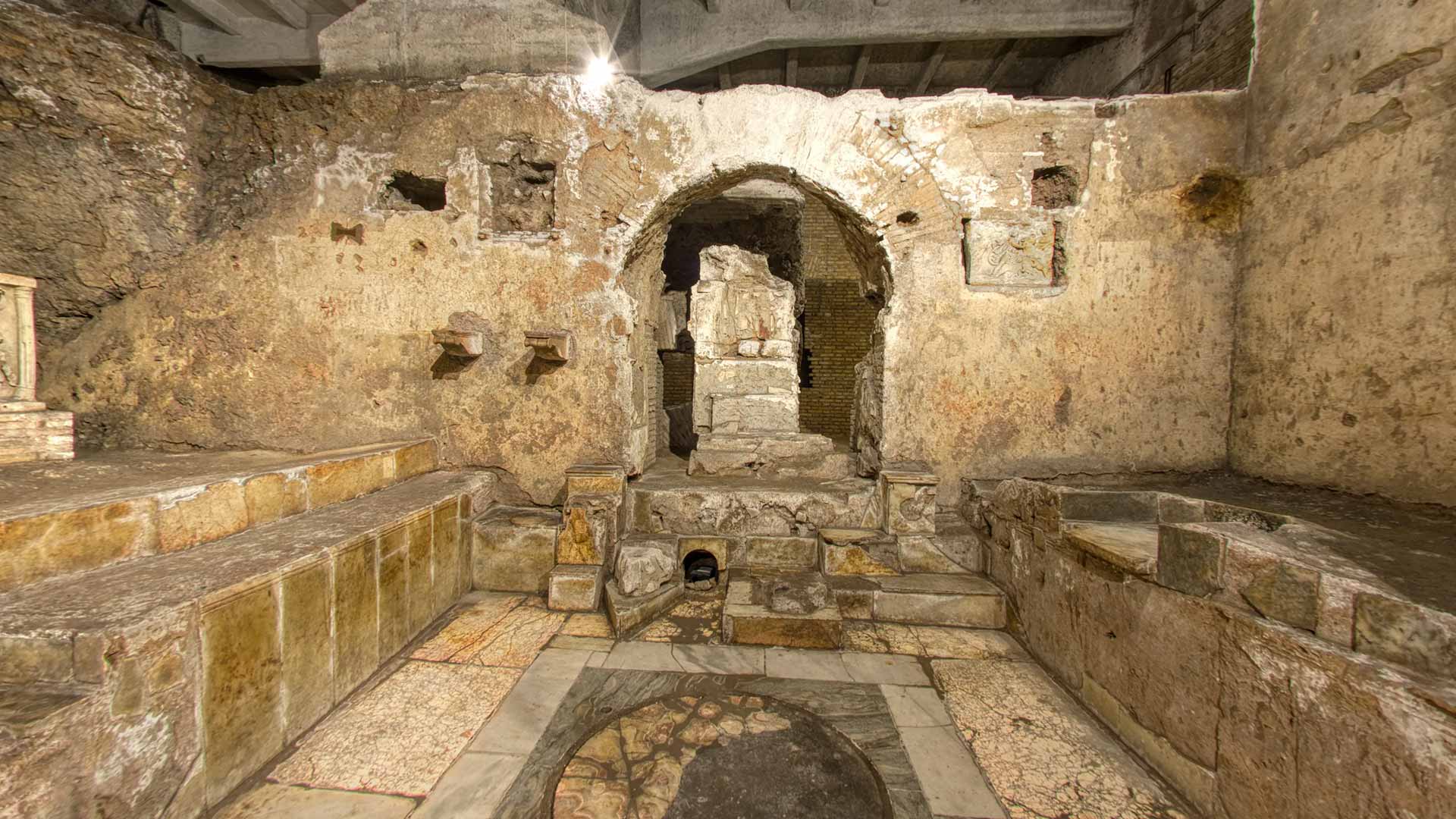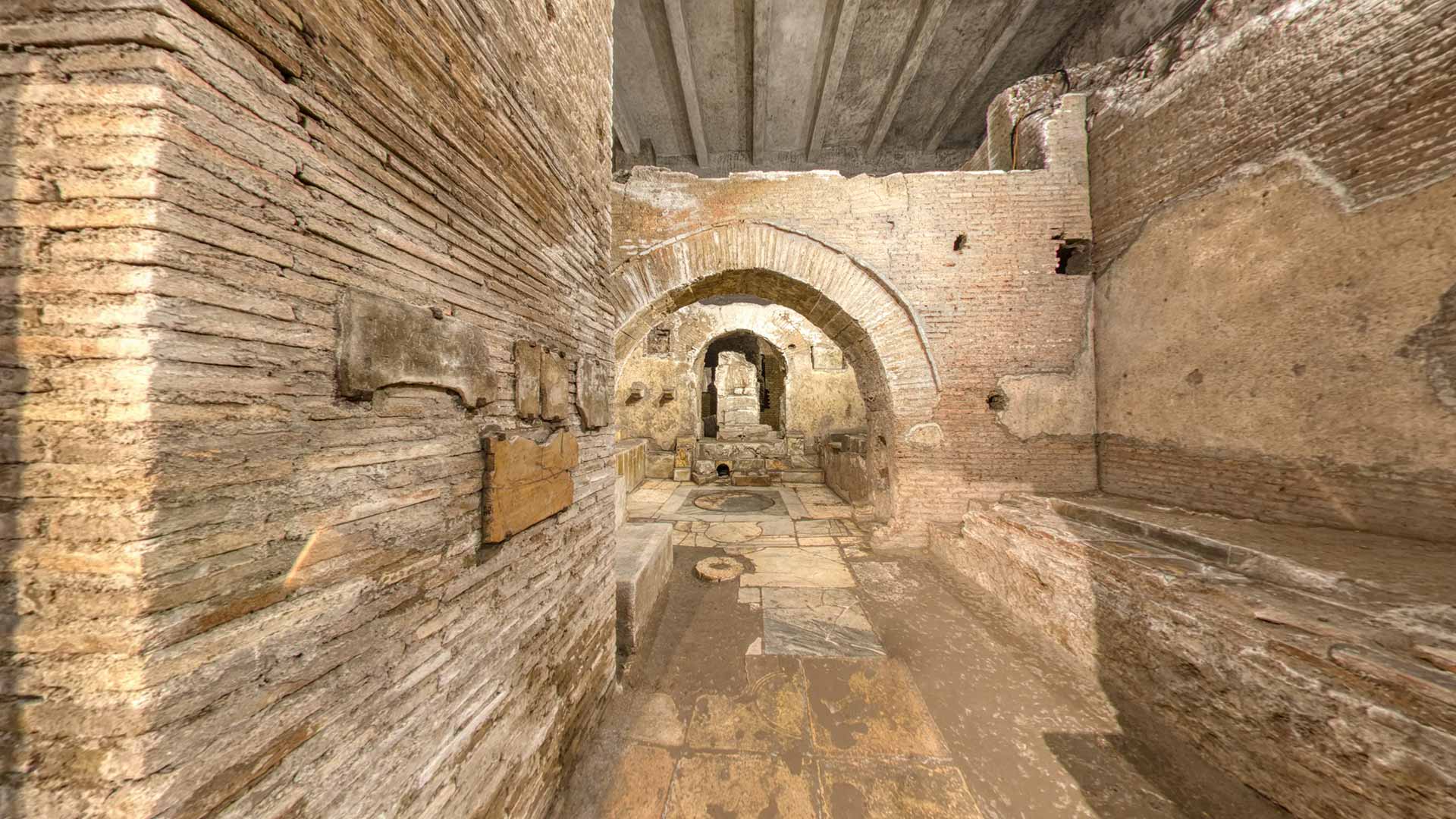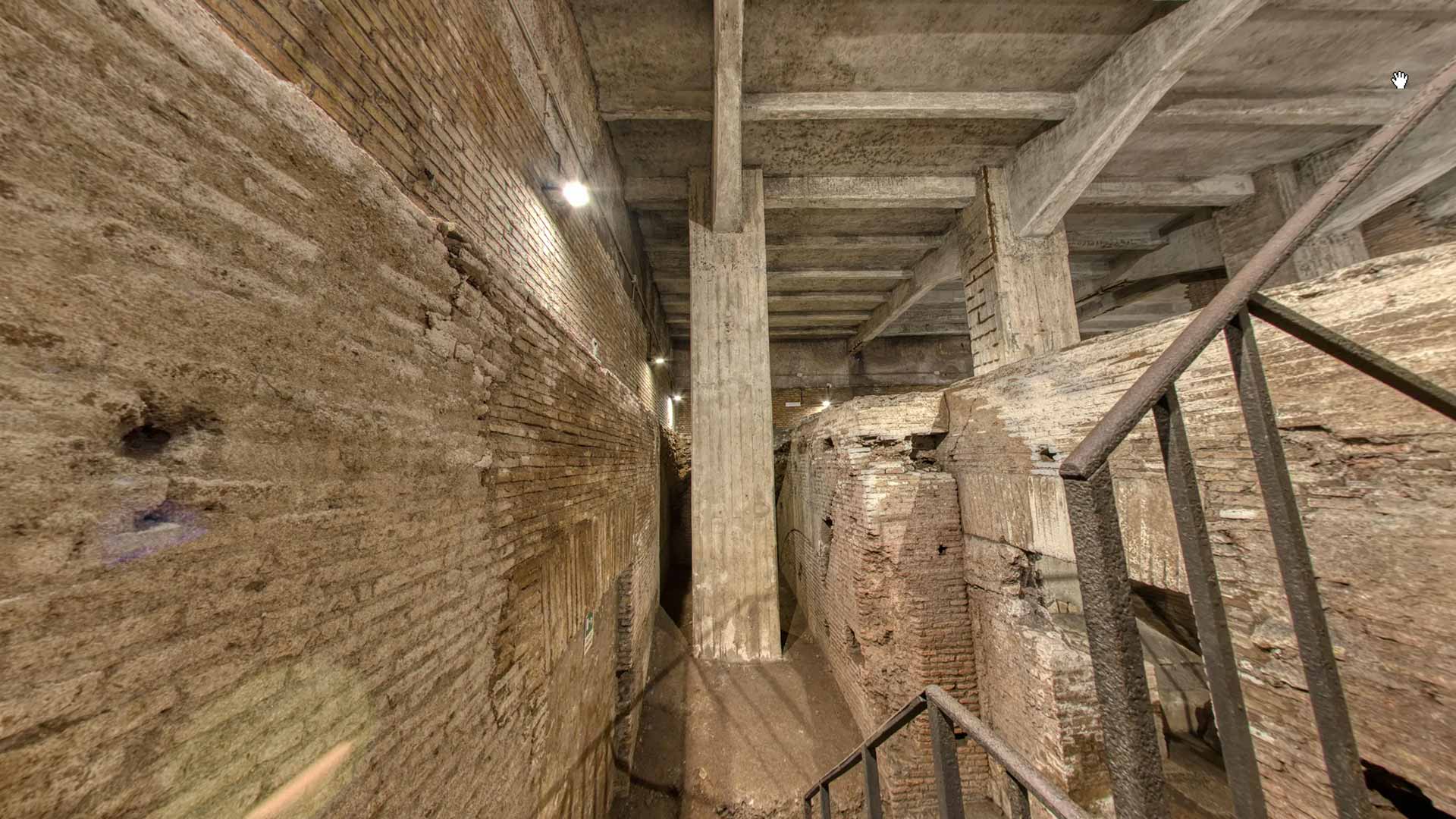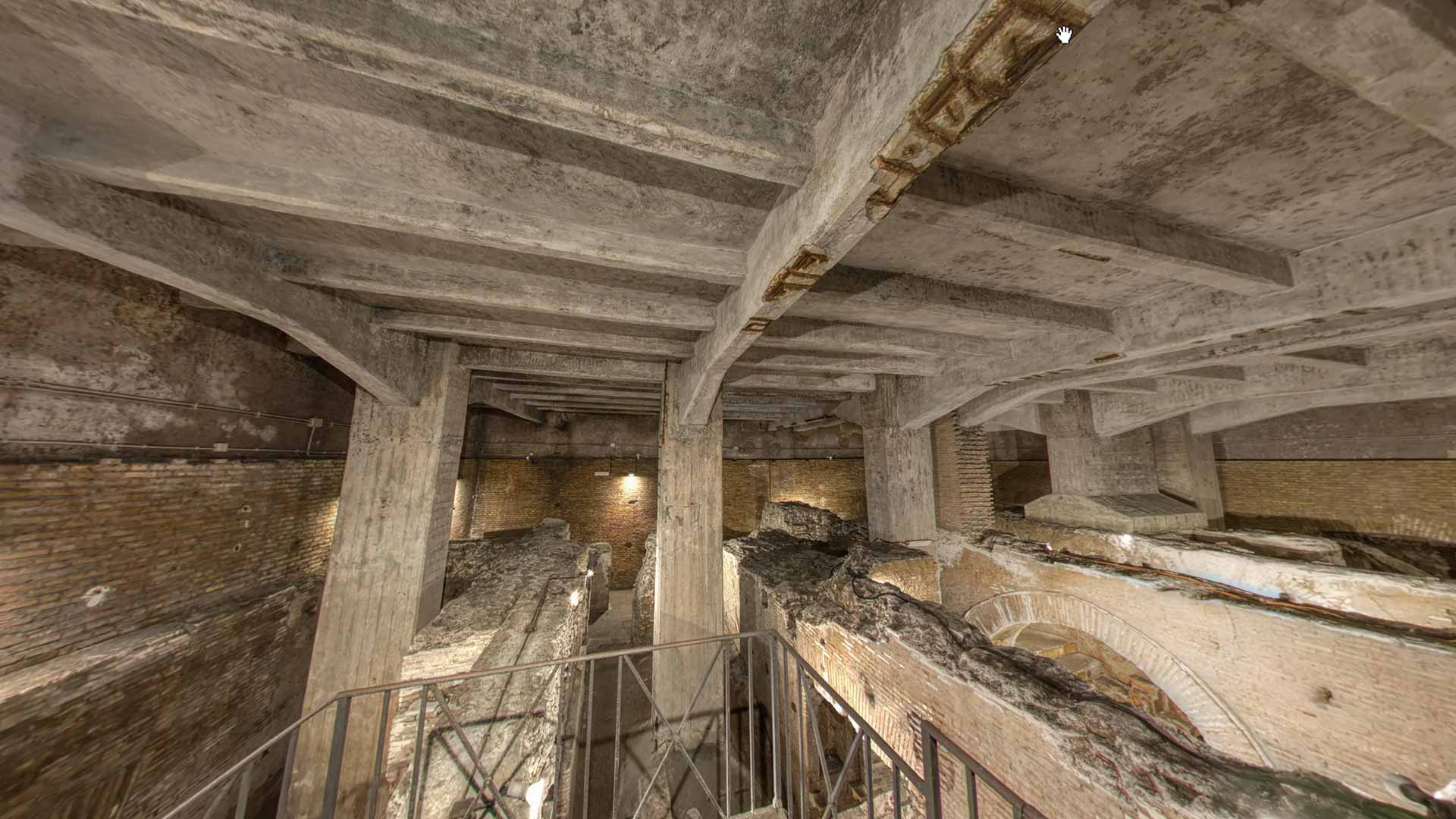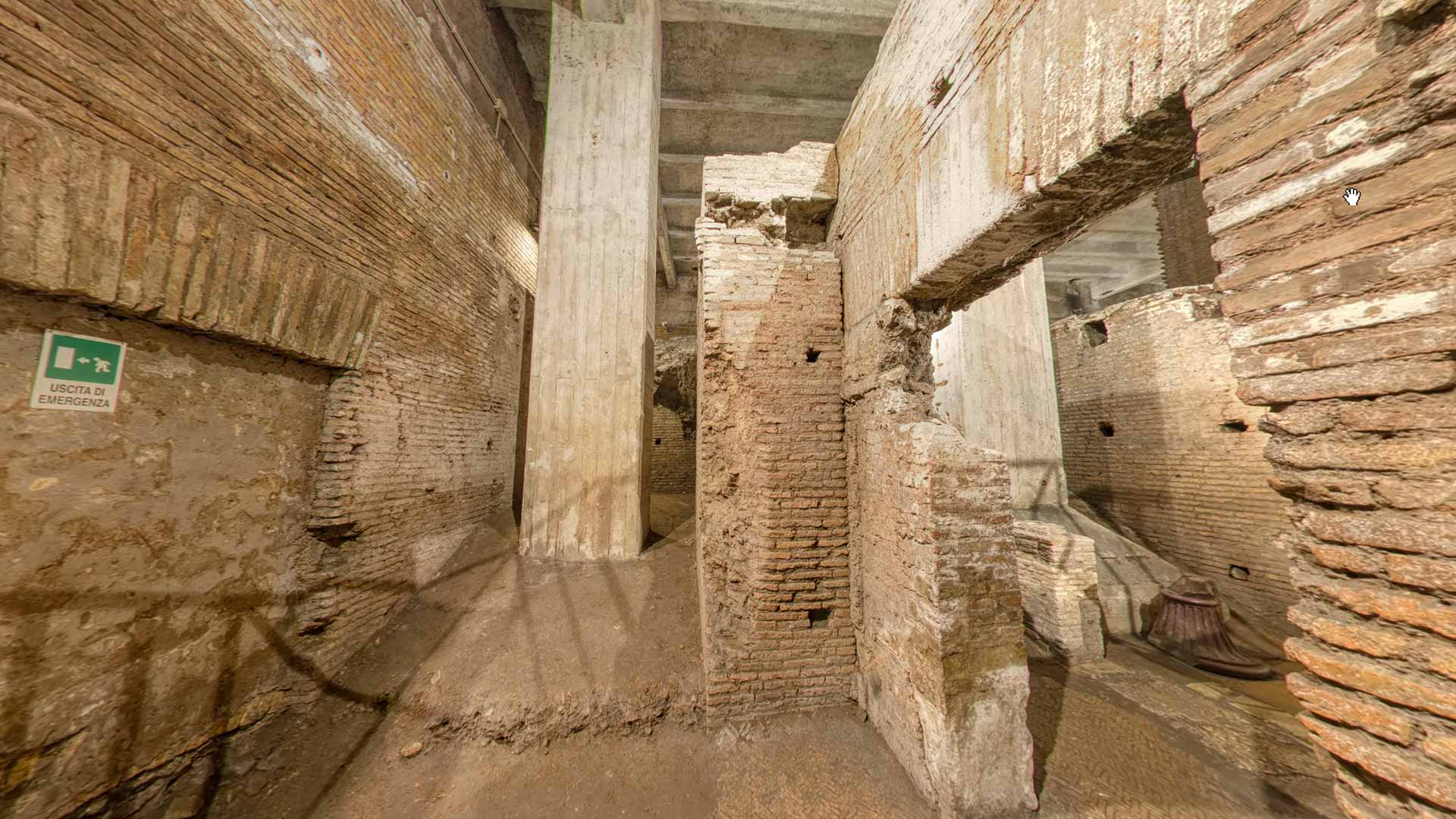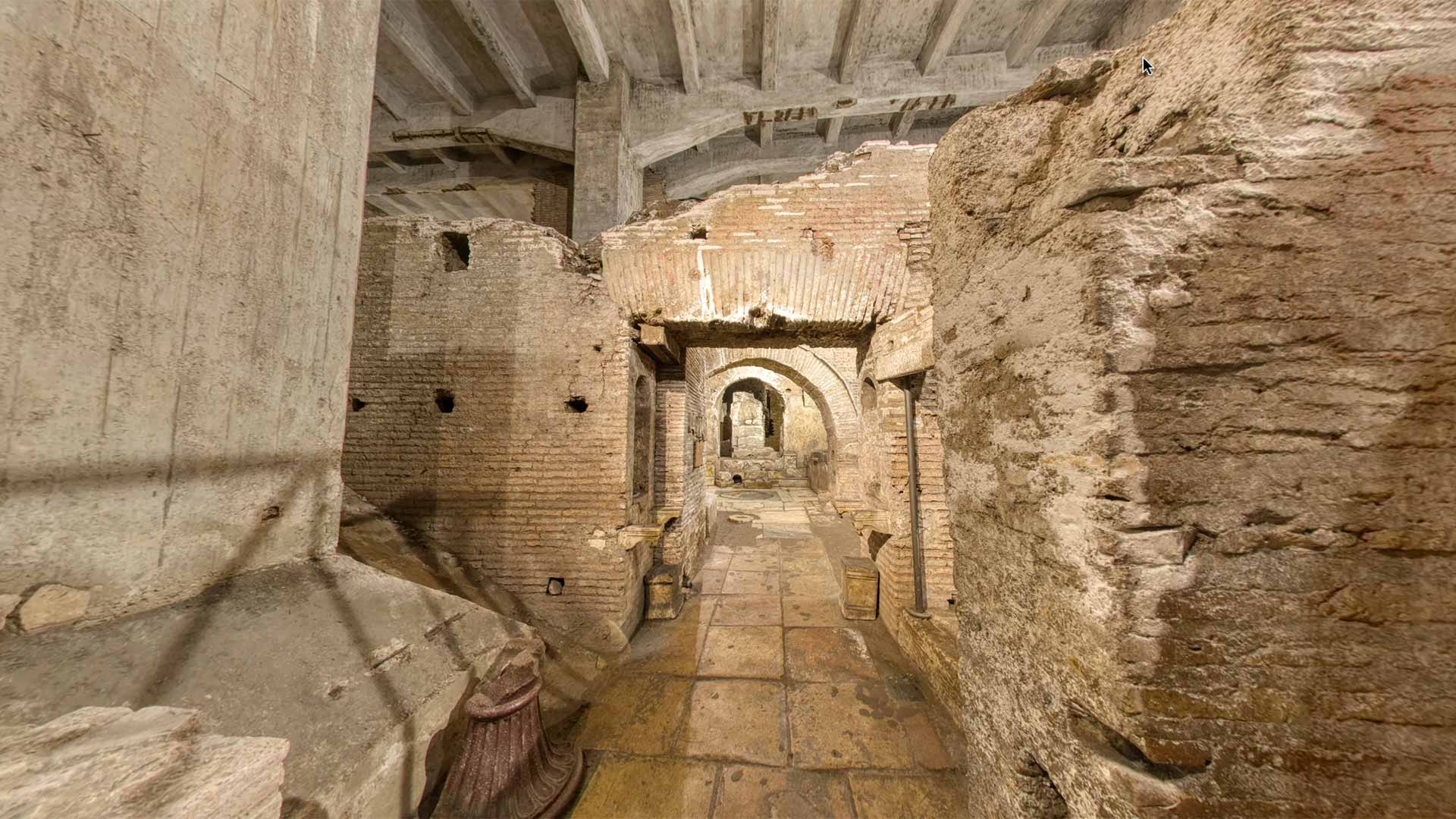Informations
Mithraeum of the Circus Maximus
The site of the Mithraeum of the Circus Maximus in Rome is an archaeological site of great interest, though little known.
The location is central to the urban development of both the ancient city and contemporary Rome. However, the fact that it is located underground and the spaces are all in all cramped, makes restricted access a necessity.
In the immensity of Rome’s archaeological offerings (there are more than twenty mithraea, not all of which can be visited) the Mithraeum of the Circus Maximus presents some uniqueness that makes it of particular impact to the visitor.
The two features just listed (forcibly restricted access and uniqueness from similar sites) make for a truly valuable experience when visiting the Mithraeum of the Circus Maximus.
Mithraea (sing. Mithraeum) were a place of worship, where the adepts of the Mithraic religion or cult of Mithras, celebrated their rites. The cult of Mithras was an initiatory mystery cult that spread throughout the Mediterranean from the 1st century B.C.
Given the secrecy with which the religion was practiced, so much so that there were no literary texts of any kind, not even as a fundamental canon, the information we have about the type of rituals and what the principles of Mithraism were are very fragmentary, and often the subject of interpretation rather than real knowledge.
The origin of the cult is supposed to be in ancient Persia, in the 6th century. B. C., and it is connected in some way to astronomical observations.
The central figure of the cult is Mithras, who is often depicted killing a bull, in an iconographic scene referred to as “tauroctony.”
Other figures featured are the Sun, Moon and four animals: snake, crow, dog and scorpion.
Three features distinguish mithraea from other places of worship:
- are small in size
- are placed in cavities such as caves or buildings that mimic their features (reference to the speleum, cave in Latin, where Mithras was born)
- Roman mithraea were always carved out of pre-existing buildings, almost always public, with access from streets, albeit not particularly obvious ones.
Thus, the mithraeum is not a place that exudes grandeur and magnificence because it was used for a cult that had to remain secret, the knowledge of which remained limited to the circle of initiates. Moreover, though tolerated, Mithraism was not openly accepted. Hence the need for secrecy. Recall that this indulgence was nevertheless exceptional in a sense, since the same tolerance was not shown for other monotheistic cults, such as the Christian cult.
Mithraea often stood near or even juxtaposed with other places of worship
In Rome the cult of Mithras experienced its greatest expansion in the 3rd century A.D., but despite the large number of mithraea (over twenty) in the city area, their size and the very little information handed down by contemporaries suggest that the cult always remained limited to a small segment of the population.
The location, in ancient Rome and in today's Rome
The Mithraeum of the Circus Maximus was discovered in 1931. Its location today makes it difficult to immediately understand its position, which was obvious at the time of its construction and use.
It is located under the former Pantanella Pasta Factory, which still houses the costume and set design workshop of the Opera House, and was accidentally found during some renovation work on a wing of the building.
The presence of this building interrupts what was a road continuity between the Circus Maximus and the Forum Boarium, an area of market and worship, in which Mithraeum of the Circus Maximus fully falls.
The Forum Boarium was an area used for religious cults since ancient times, and important evidence of this function remains, such as the Temple of Portunus and the Temple of Hercules the Victor.
It is therefore not surprising that even the secondary cult of Mithras had identified this area as one of the places to build a mithraeum.
A layered place
Archaeological excavations and surveys conducted have uncovered signs of what are most likely multiple structures from different periods.
This as already mentioned is a characteristic feature of mithraea.
Signs of multiple phases of the Mithraeum of the Circus Maximus were already evident during preliminary archaeological surveys, which revealed some distinctive elements of the various eras in which the structures that make up the multi-layered site were built.
In other words, it appears from the archaeological evidence that the site of the the Mithraeum of the Circus Maximus had at least four phases of use and related architectural development.
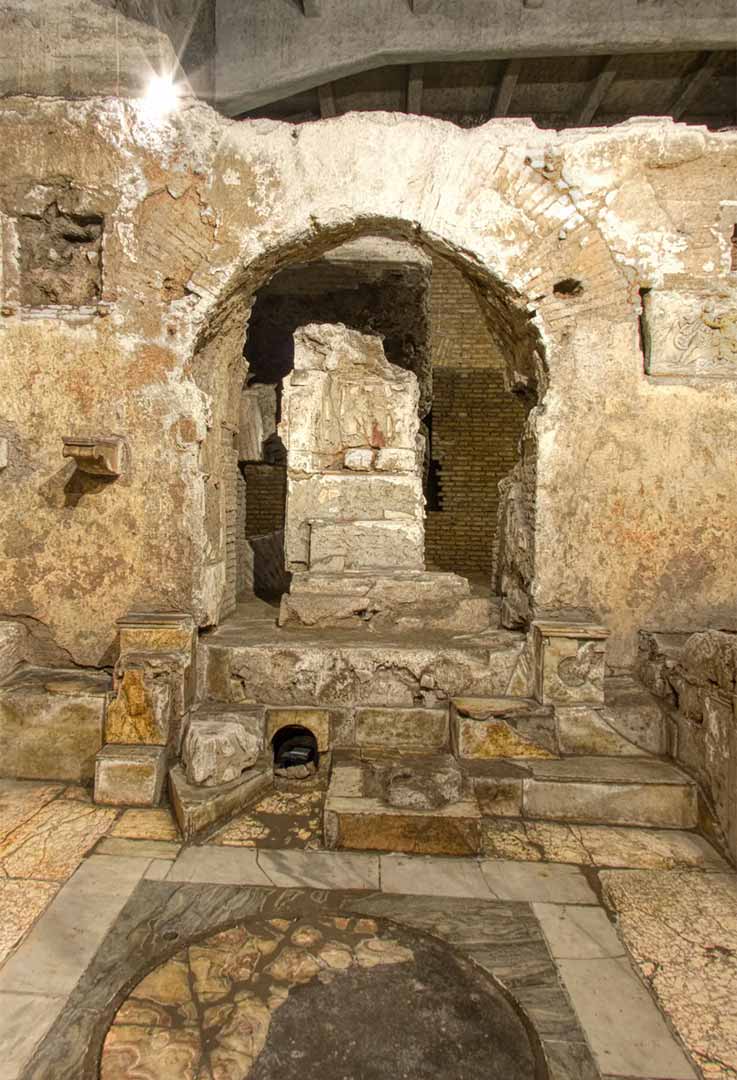
The four stages are approximately:
- middle republican age
- first half of the 1st century AD
- second half of the first century AD.
- 3rd – 4th centuries A.D.
Clearly, each subsequent phase involved covering or demolishing parts of the structures of the previous phase.
However, recognizable elements are still evident. For example, to the early mid-Republican phase belongs the large channel made of tufa blocks and a rich votive stipe dedicated to Hercules invictus and victor (victorious and victorious). Of the former we have only an account in the writings related to the first excavations; today it is no longer there. Instead, the stipe is preserved in the Capitol.
Belonging to the second phase are architectural elements that denote its intended use as warehouses. Among these should be noted some brickwork defining two sets of four rooms, the floor of which was probably in opus spicatum (tiles arranged in a fishbone pattern), covered by a wooden roof (wooden trusses).
The third phase is marked by a transformation of the site into a luxurious monumental complex, which overlooked the Circus Maximus with two large marble-clad brick staircases still very well preserved. Of particular interest, still belonging to this phase, is the precious red porphyry molded support of a labrum, likely originating from the furnishings of this building and reused in the Mithraic sanctuary.
The fourth phase is that of the Mithraeum proper, which was carved out in the area below the stairways. The sub-stairs offered the best reminder of the speleum (cave in Latin), that is, the sacred cave in which Mithras was born. To be precise, some archaeological evidence suggests the existence of two successive phases of the Mithraic sanctuary. The first phase is associated with the Mithraic inscription reused as a covering for the base to the left of the Mithras shrine, which is dated to the mid-3rd century AD. The second phase includes the refurbishment of the flooring of the first section of the corridor, made with bipedales (a type of brick), which can be dated to the Diocletian era (mid-3rd century AD, indeed).
Intended use of the various stages
The stipe dedicated to Hercules testifies to religious use in the early late Republican phase.
Later, the spaces of the Mithraeum served the function of warehouses (first half of the 1st cent. AD).
With regard to the third phase, on the other hand (second half of the 1st century AD), the materials found, intact or in the form of rubble, support the hypothesis of the public use of the building.
In particular, it seems likely that these spaces were used as the headquarters of the Prefecture of the annona, which served to manage the procurement and distribution of grain.
The sanctuary dedicated to the worship of Mithras was established on the first floor of the Statio annonae, with minimal architectural alterations to the previous structures, under the staircase.
The site was abandoned following the edict of Theodosius (391 A.D.), which banned all cults unrelated to Christianity.

Findings of special interest
The artifacts found at the site are many but largely fragmentary due to the historical vicissitudes of the site.
These are fragments of decorative and architectural elements, votive objects used for worship, marble wall covers, structural elements etc.
Of particular interest to the visitor are undoubtedly the bas-reliefs of Mithras, the inscriptions, and the twelve concentric circles painted on the back wall of the right podium.
Bas-relief A, the larger of the two, depicts the climactic scene of Mithraic worship, namely tauroctony. The god Mithras is depicted killing the bull.
The scene is a depiction of an episode related to the cult’s mythology, and not a simple ritual sacrifice, although it should be specified that interpretations regarding the cult’s iconography are varied and uncertain to a large extent.
According to one such interpretation, Mithraic tauroctony would represent in allegorical form the eternal dichotomous struggle between good and evil, life and death.
All the other iconographic elements usual in mithraea also recur in the relief. Indeed, the sun and moon in the upper corners, the raven, the dog, the scorpion and the serpent, and the two dadophores, or torch-bearers, coming out of the cave and depicted on a lower scale, as if trying to propose a perspective view, are very evident.
Another particularly interesting feature are the inscriptions, one of which is right above the large bas-relief.
According to some interpreters of Mithraic worship, adepts learned rites and dogmata through rituals, iconography, personal behavior, and communication with adepts of higher seniority. This communication was very rarely in written form. However, we have a few examples of remnants of ritual scripture.
And some were found in this very Mithraeum.
Epigraphs found at the Mithraeum of the Circus Maximus bear dedicatory texts and texts of a possible cultic nature, with obvious references to magical practices.
These are largely fragments, but their usefulness is twofold. The names of the people confirm through the origin of the surnames, the spread of the Mithraic cult among slaves, freedmen, and generally lower social strata, such as the military.
In addition to this, archaeologists have been able to assess from the style of the inscriptions the era in which they were written, which evidently helped in dating the Mithraic phase of the site. This began to be used as a place of worship of the god Mithras probably in the 3rd century AD.
Extremely interesting, but of highly problematic interpretation is a graffito found on the back wall of the last room of the Mithraeum.
There are two problems with this graffito: one interpretative of the text, the other of actual chronological placement.
The text appears to be corrupted by the gradual crumbling of the plaster and does not have unanimous interpretations between its two main scholars.
But the real problem is the impossibility of dating the scratch with certainty and definitively determining whether or not it is the work of an adept.
Instead, the twelve concentric circles, flanked by four others at the corners of a hypothetical square, are a unique element of this mithraeum. Lacking other references in places of mithraic worship in Rome and elsewhere, the current hypothesis is that it is a representation of the zodiac and the winds or seasons. This view is partially supported by the fact that astronomical observation and astrology are recurrent elements in Mithraic worship.
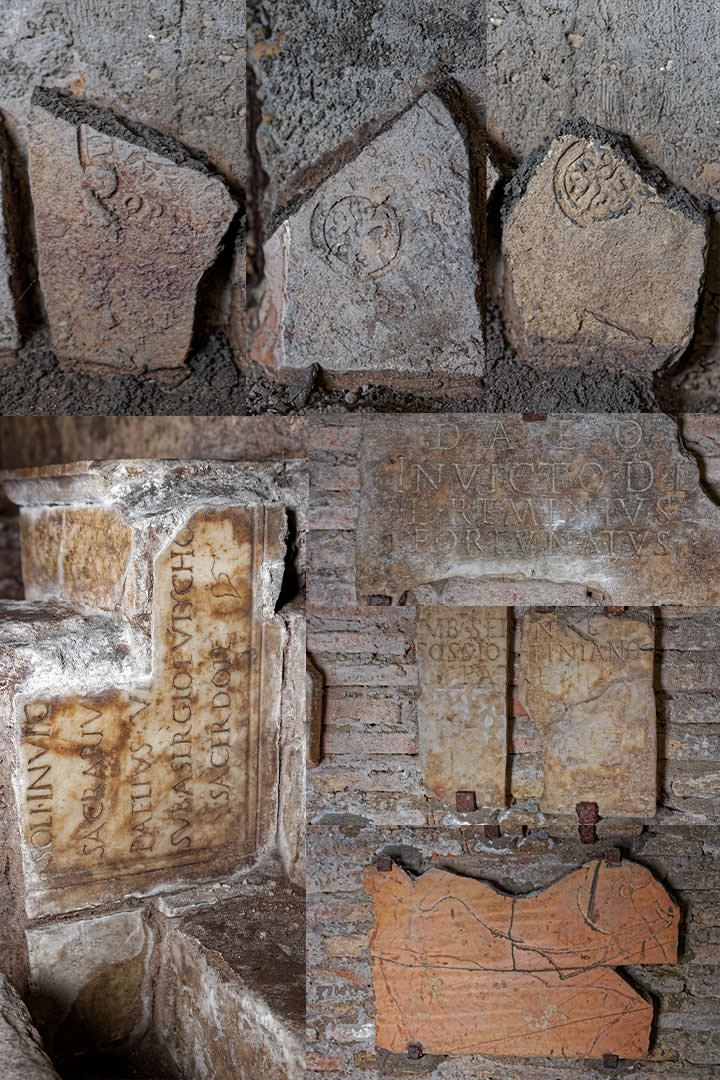
A history yet to be written
The Mithraeum of the Circus Maximus is still the subject of assiduous study. Today’s conclusions may be reevaluated in the future in light of upcoming discoveries.
Sites with the characteristics of multi-layered nature and fragmentary finds such as these pose distinctly important challenges to specialists dedicated to their study.
Further discoveries at other similar sites will allow connections that are at the moment invisible or not immediate.
For anyone wishing to learn more about the current state of studies of the Mithraeum of the Circus Maximus, a comprehensive volume is available that addresses all aspects that have not been addressed here for reasons of space:
- Fontana, E. Murgia (eds.) “Il Mitreo del Circo Massimo. Studio preliminare di un monumento inedito tra archeologia, conservazione e fruizione“, Trieste 2022.
The volume is the result of the Research Agreement signed in 2016 between the Capitoline Superintendence and the University of Trieste and can be consulted and downloaded at the following link
Virtual Tour of the Mithraeum of the Circus Maximus
What is presented on this page is a virtual tour made by MMSE.
The virtual tour consists of a series of 360-degree photographs taken in situ, which were then “edited” to form an organic whole.
The photos were taken with cameras specifically for this kind of format. The post production process, on the other hand, was done using special software.
The virtual tour is enhanced by the ability to navigate the site in almost total freedom through the simple use of the mouse or touch screen.
Lastly, virtual guides have been added at strategic points, illustrating to the digital visitor the highlights of this peculiar and definitely still mysterious place.



